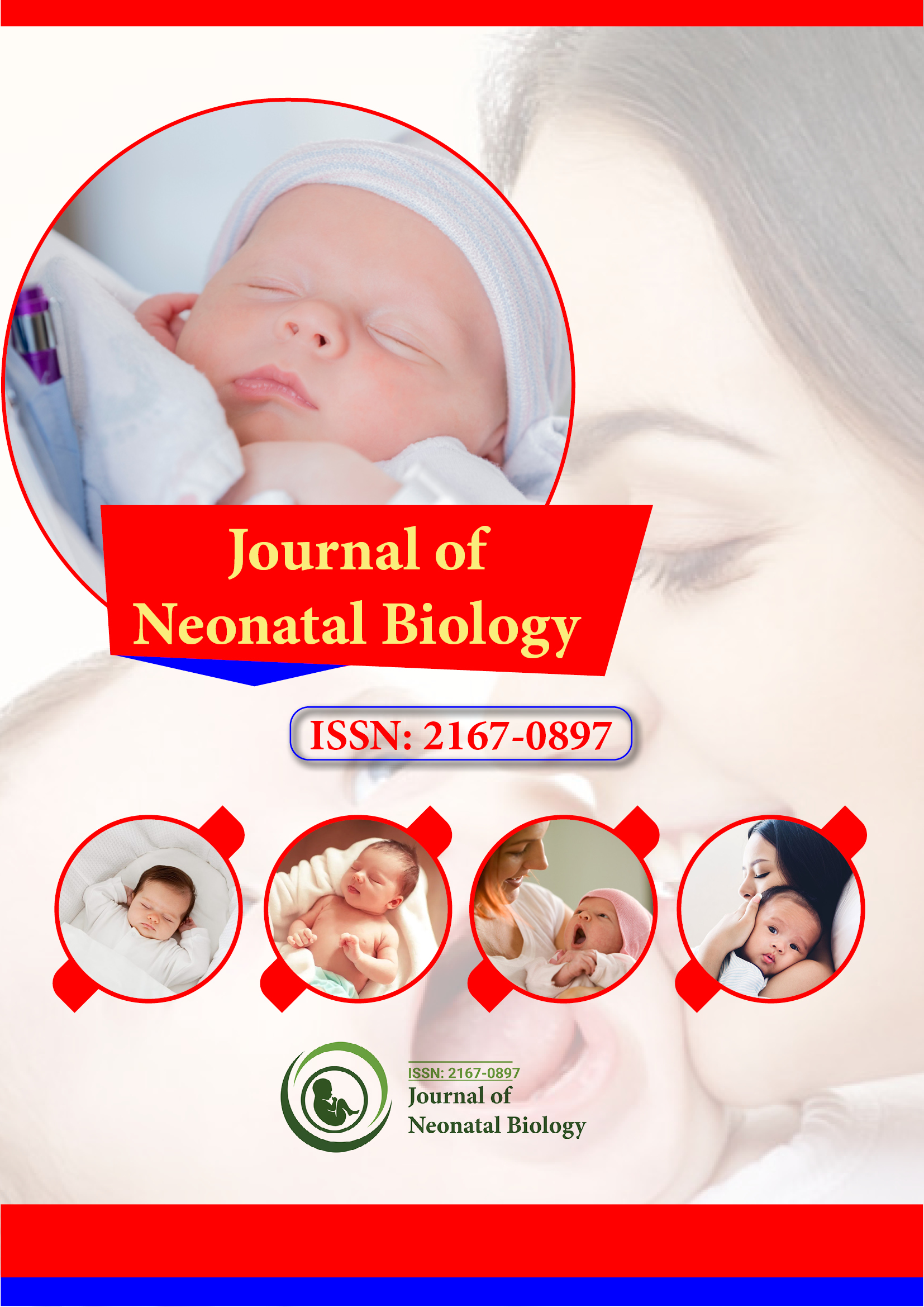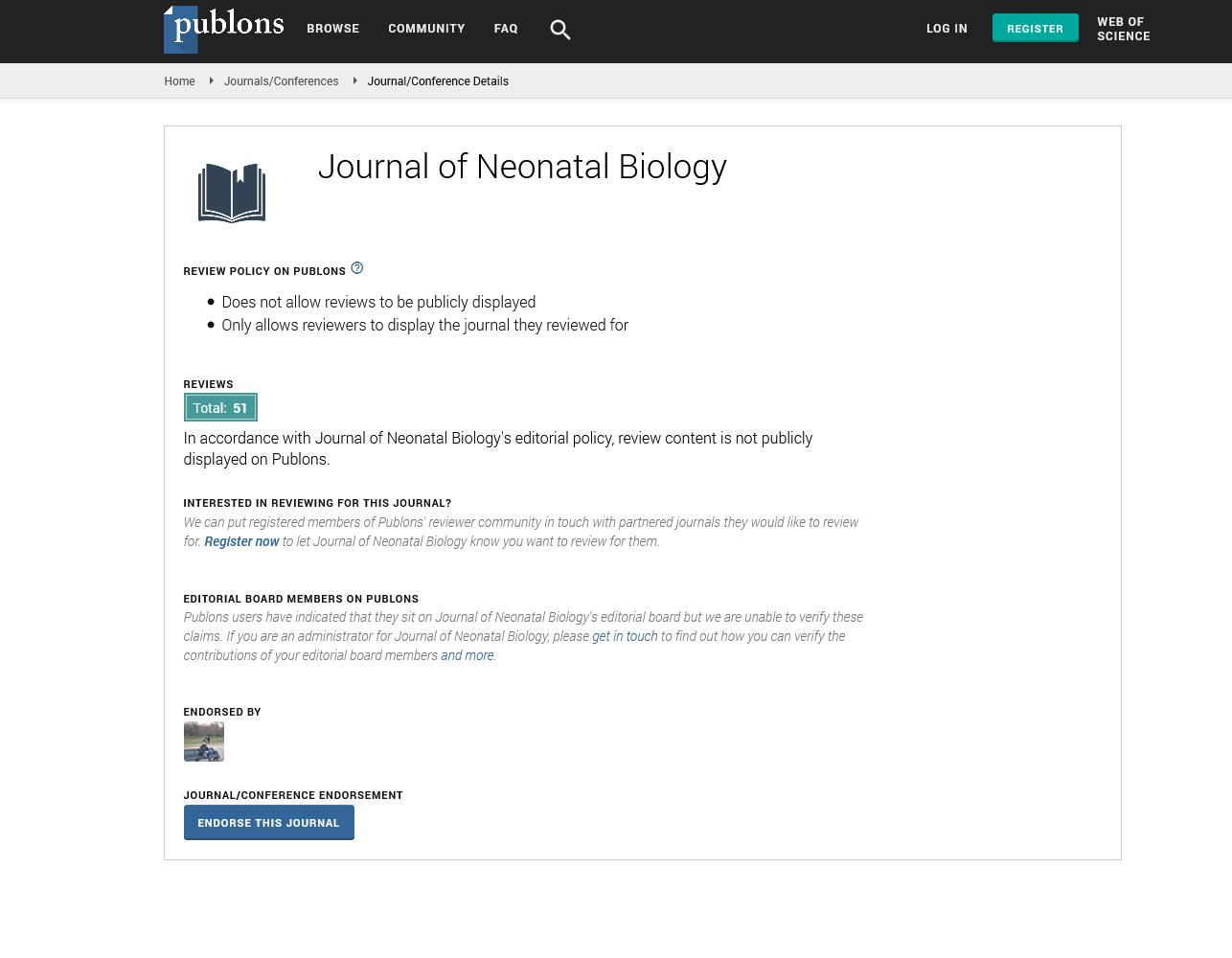Indexed In
- Genamics JournalSeek
- RefSeek
- Hamdard University
- EBSCO A-Z
- OCLC- WorldCat
- Publons
- Geneva Foundation for Medical Education and Research
- Euro Pub
- Google Scholar
Useful Links
Share This Page
Journal Flyer

Open Access Journals
- Agri and Aquaculture
- Biochemistry
- Bioinformatics & Systems Biology
- Business & Management
- Chemistry
- Clinical Sciences
- Engineering
- Food & Nutrition
- General Science
- Genetics & Molecular Biology
- Immunology & Microbiology
- Medical Sciences
- Neuroscience & Psychology
- Nursing & Health Care
- Pharmaceutical Sciences
Opinion Article - (2022) Volume 11, Issue 9
Screening of Jaundice in Neonates by using Transcutaneous Bilirubin Meter
Vasco Chikwasha*Received: 02-Sep-2022, Manuscript No. JNB-22-18328; Editor assigned: 07-Sep-2022, Pre QC No. JNB-22-18328 (PQ); Reviewed: 23-Sep-2022, QC No. JNB-22-18328; Revised: 30-Sep-2022, Manuscript No. JNB-22-18328 (R); Published: 07-Oct-2022, DOI: 10.35248/2167-0897.22.11.369
Description
A temporary and physiological accumulation of bilirubin causes the most majority of neonatal jaundice, which is a common condition. Neonatal hyperbilirubinemia, however, may become extreme in a tiny percentage of infants, which could ultimately result in brain damage. Neonatal hyperbilirubinemia, while being a preventable disorder, has been reported to be on the rise. This condition is still a major contributor to lifelong neurodevelopmental impairment and comes at a substantial cost to the affected family and society. While there may be a variety of reasons why preventative efforts fail, it has been determined that three critical safety issues exist: failure to measure bilirubin, timing issues, and a lack of repeated bilirubin readings.
Transcutaneous bilirubinometry is based on the high degree of connection between cutaneous bilirubin and TSB. Transcutaneous bilirubinometers, to put it simply, examine the spectrum of light reflected by a baby's skin to determine how yellow it is. A paediatrician frequently wants to compare the real serum bilirubin level to his clinical assessment of the icterus. The ideal method for this would be accurate, non-invasive, and reliable. The agreement between transcutaneous bilirubinometer findings and TSB has been examined in a significant number of studies. The majority of investigations have discovered a decent to good association between the two. However, correlation is not a suitable statistical method for evaluating agreement.
Older tools were shown to be more useful in studies of white people and other populations, but investigations in India did not show the same level of agreement. Even while there may be a good connection, the difference between two results may be too great for therapeutic use. Transcutaneous bilirubin estimation and TSB may differ by an amount that is too great to be tolerated. Additionally, these tools are useless once phototherapy for hyperbilirubinemia is initiated. Transcutaneous bilirubinometers can still be used as a screening tool despite their drawbacks, particularly in cases where a neonatologist's services are not readily available. This, however, cannot take the place of TSB estimates. The soles and palms become stained once bilirubin levels above 15 mg/dl.
The majority of newborns experience this benignly, however those with the highest bilirubin levels are more likely to get kernicterus. Early diagnosis of hyperbilirubinemia is of utmost importance and necessitates examination via non-invasive screening. The accepted method for identifying newborns that are more likely to develop kernicterus is to compare SB measures to an age-specific normogram. The majority of samples are taken from neonates using heel sticks, which can be uncomfortable and have additional risks associated with blood collection, such as infection and perhaps osteomyelitis. A transcutaneous bilirubinometer can also be used to monitor bilirubin levels intravenously.
When a photo-opaque patch is placed on the baby's skin (typically the forehead) while the baby is receiving light bank phototherapy and the transcutaneous bilirubin level measurement is carried out on the skin that has not been exposed to phototherapy, transcutaneous bilirubin level measurements may be accurate.
The use of Transcutaneous Bilirubin (TCB) measures as a screening tool to identify clinically significant jaundice and lessen the requirement for frequent blood sampling in the wellterm infant has been advocated by a number of researchers due to their established linear connection with SBRs. In clinical practice, transcutaneous bilirubin measurement is most frequently performed on the forehead. The potential harms associated with under diagnosis of moderate to severe jaundice include; sensorineural hearing loss.
The tools that are already on the market are not sensitive and specific enough to replace TSB measurement. Transcutaneous bilirubin estimation and TSB appear to differ by an amount that is inacceptable great. Transcutaneous bilirubinometers, however, can be used as screening tools, particularly in cases where a neonatologist's services are not available.
Citation: Chikwasha V (2022) Screening of Jaundice in Neonates by using Transcutaneous Bilirubin Meter. J Neonatal Biol. 11:369.
Copyright: © 2022 Chikwasha V. This is an open-access article distributed under the terms of the Creative Commons Attribution License, which permits unrestricted use, distribution, and reproduction in any medium, provided the original author and source are credited.

